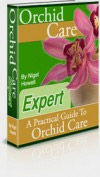You may be surprised to know that fungus is necessary for the growth and development of your Orchid.
The Good
Fungi dwells in the Orchid’s root cells making a dual organism known as ‘mycorrhiza’, this fungus penetrates the root walls and gathers vital nutrients that are broken down and fed upon by the Orchid and the two generally live in harmony with each other.
The Orchid is capable of germinating seeds without the fungus, however the process can only be completed once the fungus has infected the embryo. This relationship of reliance can last the duration of the Orchid’s life, particularly in species where the plant is deficient in Chlorophyll and cannot absorb nutrients from the soil.
The Bad
That being said, it is possible, on occasion, that this fungus may also result in infection and rot in the plant, symptoms of which are yellow leaves, decay, and if left untreated – death.
This is very preventable however, and providing you take proper care of your plant, these problems should never arise. You can prevent infection by ensuring that you keep air moving, opening windows or using a fan; not watering on cool, cloudy days or over-watering generally; changing the growing medium fairly regularly and treating as soon as there are any signs of trouble.
There are three main types of fungal infection to look out for in your plant, all of which vary slightly in terms of symptoms. If you observe soft, rotted areas on leaves that are purple-brown in colour with a yellow outside edge, your plant may be suffering from ‘Black rot fungus’ which, if left untreated, will eventually spread to the roots and kill the Orchid.
Proper Treatment for Infected Orchids
To treat, you should completely cut off the infected area as well as around 2cm of healthy tissue using tools that have been sterilized in either a 10% bleach solution or with a flame before drenching with a fungicide that contains Etridiazole. Repot in a new, sterilized pot and keep it alone in a place where there is little moisture until dry and water moderately until the plant is fully recovered.
If, over a period of months, your plant seems to lose vitality, becoming droopy and stunted, it may be suffering from ‘Root rot fungus’, if this is the case, you will find brown-black blotchy areas in the roots and its leaves will have a yellow, contorted appearance.
To treat, you should carefully cut off all rotted roots and infected areas, again, being careful to sterilize your tools before use, and repot in new potting mix and sterile pot. You should then take your plant outside and soak with fungicide according to its instructions, keeping a close eye on it until it has visibly recovered.
Finally, if you find that the leaves on your plant begin to yellow on the underside before spreading to the top of the leaf, it may be suffering from ‘Leaf spot fungus’. As the name would suggest, this type of fungus affects injured leaves and you will find small, round sunken spots which are brown in colour. Treatment for this is simple as you only need to remove visibly, badly damaged leaves and again, spray with fungicide.
If you are treating your plants for any of the above infections you should take care to ensure that your tools are properly sterilized, particularly if treating more than one plant as infection is easily spread between plants. If in doubt, contact your local garden centre.

